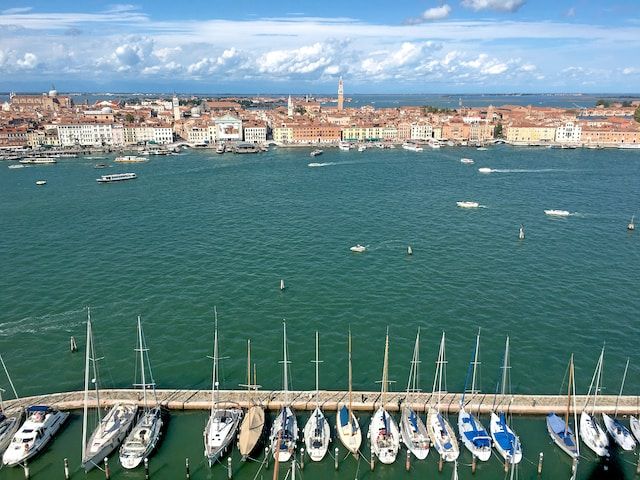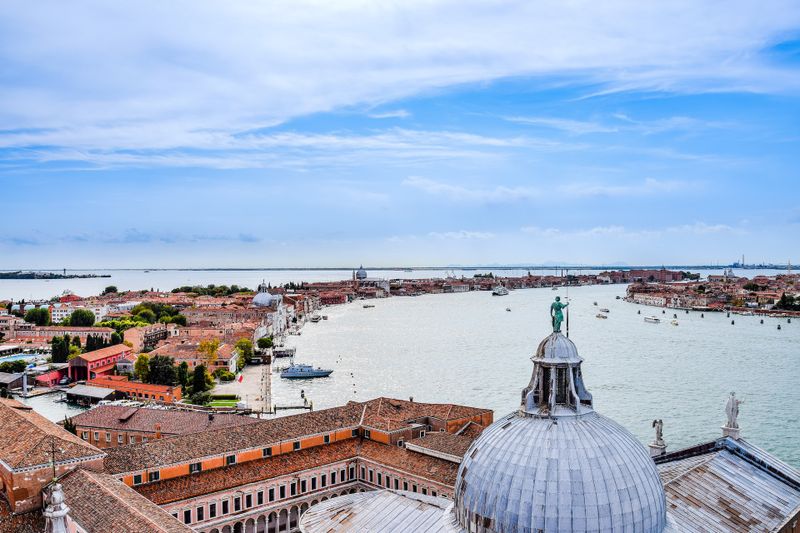Venice, one of the most fascinating cities in the world, attracts millions of visitors every year with its extraordinary cultural heritage and the unique beauty of its canals and streets. However, some tourists have complained of unpleasant odors in some parts of the city during their visit.
In this article, we will explore the reality of these odors and the reasons that cause them. It is important to note that Venice is a must-see destination, and these odorous inconveniences are temporary and circumscribed.
Does Venice smell bad? And if so, what are the causes of this discomfort?

Let's start right away: Venice in general does not have an unpleasant smell, although some areas of the city may occasionally emit an unpleasant odor depending on the season and weather conditions. This is similar to what can occur in any other city at certain times.
It is likely that this discomfort is temporary. And here we will explain the reasons behind such phenomenon. But we would like to emphasize that you should not let these rare situations prevent you from visiting this wonderful city if it is your wish.
Does Venice smell bad?
Short answer: No, Venice as a whole does not smell bad! However, you may experience unpleasant smells in some parts of the city, especially when you approach the canals and sometimes during the summer months. But, once away from those specific spots, the smell disappears.
Where does Venice's garbage end up?
Venice has a unique sewage system, known as "gatoli," consisting of a network of underground masonry canals. This ancient system dates back to the 16th century and served as a drainage system for sewage and rainwater.
After the water was collected, it flowed into the city's smaller canals or into the lagoon. The "gatoles" were periodically exposed to the tides, which helped to clean and disinfect the conduits.
In the 20th century, many of these "gatoli" became clogged, leading to the obligation to install septic tanks before discharging water into the canals to solve the problem.
Impact of mass tourism on Venice: the waste challenge
Venice, in its unique splendor, faces the enormous challenge of the impact of mass tourism on waste management. The increasing waste generation caused by the millions of visitors is a major contributor to the occasional odors that some parts of the city may emit. In this section, we will explore how mass tourism has affected waste management in Venice and the measures taken to mitigate this problem.
Why can Venice smell bad in summer?
During the summer in Venice, two different situations can cause unpleasant odors. First, drainage of canals for street cleaning or foundation maintenance can expose mud and debris, generating intense odors during summer days. This problem is limited to areas where such work takes place.
The second situation is related to Venetian tides. During summer, low tide is more frequent than in winter. When the tide is low, mud and silt emerge, causing bad odors. This is especially noticeable during summer low tides.
It is for these reasons that we mentioned the summer season as a time when bad odor can be most pronounced in Venice.
In short, although there are situations in which unpleasant odor can be experienced in some places...
Why can Venice give off unpleasant odors?
Let's examine in more detail the reasons behind occasional odors in Venice, which in any case only affect certain parts of the city at certain times of the year.
Waste/Sweeping
There are two main reasons behind the increasing waste generation in Venice that were not present in the city's early days or in later centuries.
First, since the 1960s, Venice has experienced steady population growth, similar to the rest of the world. Only recently has the population stopped increasing as many people have moved to the mainland.
The second reason is the massive flow of tourists throughout the year. This has led Venice to produce more than twice as much waste per capita as other major cities in the Veneto region.
The city's historic center hosts about 30 million tourists a year, including day visitors and those staying longer. This high number of visitors in a limited geographic area is not environmentally sustainable. As a result, during the busiest days, such as vacations or summer vacations, waste collection is often insufficient to keep it clean.
If waste is not collected for a few hours, especially during hot summer days, a bad smell can be perceived in some parts of the city.
Waste management
Before 2016, garbage was simply left outside houses, along the streets, causing unpleasant smells and low quality in waste collection.
In the lagoon area, garbage collection has always been difficult because of the city's unique structure of canals and narrow streets. This problem has become almost untenable due to the 30 million annual tourists and the numerous seagull colonies that contribute to the spread of garbage and proliferation of rats.
In 2016, the Veritas company, part of the City of Venice, introduced new waste collection methods, including door-to-door and the use of boats with waste compactors, allowing citizens to deliver waste themselves.
Tides
Tides can play a dual role in Venice's odors. High tides help to periodically clean the "gatoli" ducts and keep unpleasant odors away. However, very low tides are the main cause of odors from the canals. During low tides, the canals dry up, becoming malodorous swamps. The odors come from deposits at the bottom of the canals.
Therefore, when you make a gondola trip to Venice, it is normal to experience occasional unpleasant odors as you navigate along the lagoon. To mitigate this problem, it is important to regularly empty the water from the canals to keep them clean. In the presence of excessive trash and sediment, even the natural tidal cleaning mechanism cannot do much.
Sewers
Venice's sewage system was based on an ingenious system of "gatoli," masonry tunnels designed to direct waste into the canals. However, after World War II, many of these "gatoli" were partially or completely clogged.
Initially, attempts were made to solve the problem by moving the mouths of the "gatoles" higher up, but this caused problems during low tides, such as bad odors, rat infestations, and poor sanitation. Later, mandatory septic tanks were introduced for some people before discharging water into the canals.
However, regular maintenance of "gatoles" and digging of canals became essential to keep the canals as clean as possible. New urban areas built since the 1970s have also adopted a more modern sewer system, with pipes instead of "gatoli."
The fact that many parts of Venice still depend on "gatoli" for the sewage system is one reason for the occasional odor. The increase in population and mass tourism using this system further contributes to these odors.
Draining for repairs
Until the late 19th century, canals were periodically drained, usually once every ten years, for maintenance or foundation cleaning. During these periods of draining, canal floors often emitted unpleasant odors due to sediment, trash, and mud accumulated over the months.
In summary, if you are trying to understand why Venice can emit unpleasant odors on some occasions, the main reasons are the abundant waste production due to mass tourism, the sewage system based on "gatoli" and tidal conditions.
Conclusion
In conclusion, Venice is an unparalleled city, but it can occasionally emit unpleasant odors in some of its areas. These odors mainly result from the increasing waste production due to mass tourism, the unique sewage system based on "gatoli" and tidal conditions.
However, it is crucial not to be discouraged by these rare situations, as Venice continues to be an extraordinary place to explore and appreciate. The city is seeking solutions to address these problems and preserve its unique charm for future generations of visitors.

